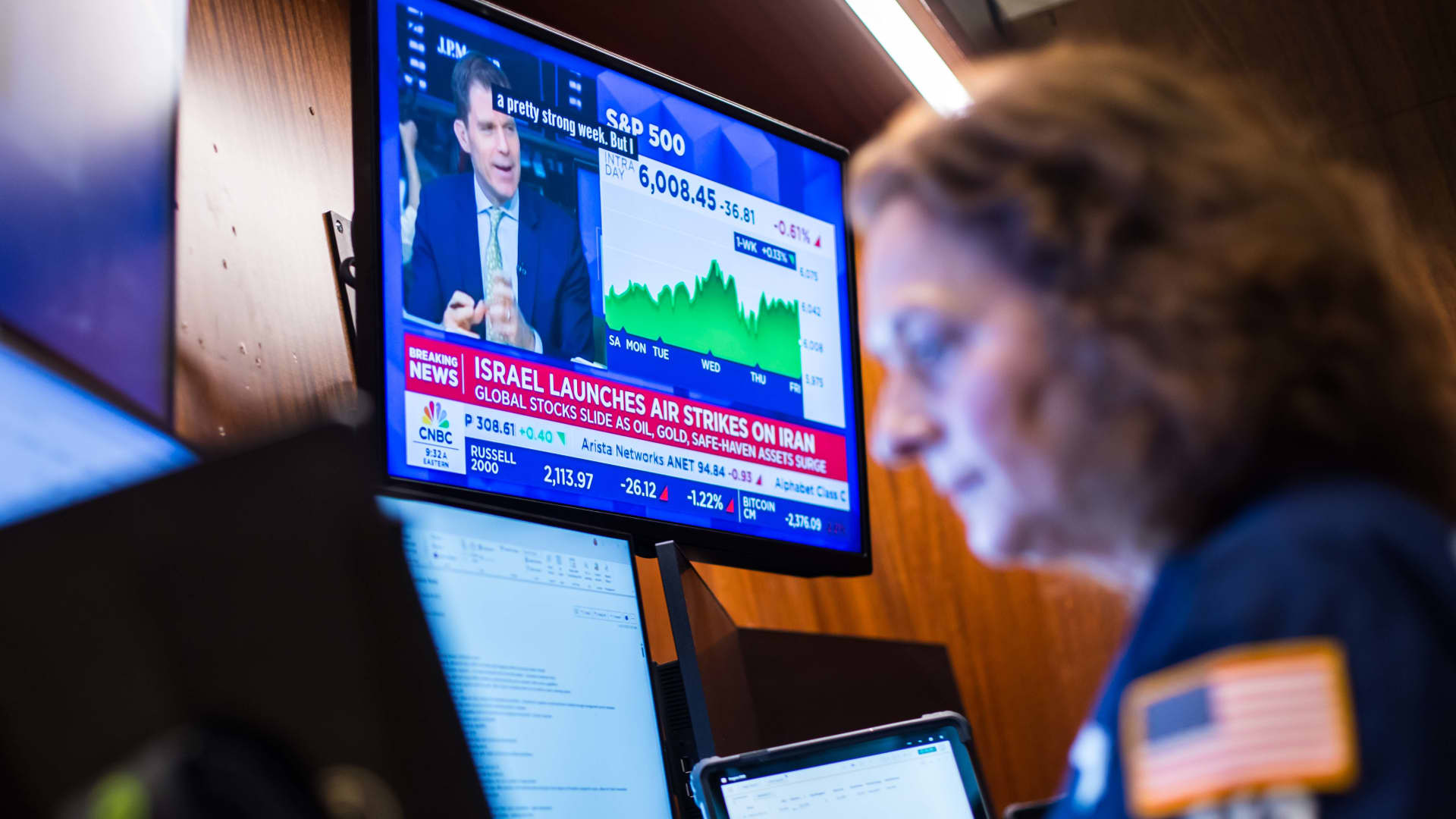The Impact of the Israel-Iran Conflict on Global Financial Markets: A Detailed Analysis
Geopolitical Sparks Ignite Market Volatility
The recent sharp escalation between Israel and Iran, involving targeted military strikes and swift retaliations, sent a jolt through global financial markets. This conflict injected a heavy dose of uncertainty that investors notoriously dislike, triggering a classic risk-off reaction. Markets responded rapidly with widespread stock sell-offs, surges in commodity prices, and a flight toward safe assets as the world weighed the potential economic ramifications of an intensifying geopolitical crisis.
Stock Market Responses: Uneven but Generally Negative
U.S. equity markets bore the brunt of investor apprehension, reflected in significant pullbacks across major indices. The Dow Jones Industrial Average declined by roughly 2.4% in the conflict period under review, while the S&P 500 and Nasdaq Composite retreated by 1.6% and 0.5% respectively. These declines erased previous gains, layering additional strain over markets already sensitive to inflation concerns and Federal Reserve policy uncertainty.
Sector impacts varied notably. Energy companies benefitted from expectations of tighter oil supply, buoying their share prices even as technology and chemical sectors suffered. The divergent sectoral reactions highlight how geopolitical tensions can differently shape investor confidence depending on perceived exposure or benefit from the unfolding situation.
Oil Prices Surge: Fear of Disrupted Supply Chains
One of the most conspicuous market reactions was the spike in crude oil prices, with Brent and WTI benchmarks jumping over 7%, pushing prices past $90 per barrel. These increases stemmed primarily from fears surrounding potential supply interruptions through the Strait of Hormuz, a chokepoint critical for global oil transport. The region’s instability elevated fears about constrained energy supply, underlining how conflicts in key geographies ripple well beyond immediate borders.
Heightened volatility added to the energy market’s complexity as traders factored in not only current disruptions but also the risk premium of ongoing hostilities escalating further. This price volatility carries broader economic implications, as oil remains a fundamental input cost influencing inflation and growth worldwide.
Gold and Government Bonds: Safe Havens in Times of Trouble
Amid tumbling equity prices and soaring oil costs, traditional refuges like gold and U.S. government bonds rallied considerably. Gold’s ascent reaffirmed its status as a go-to asset in times of political and economic turmoil. Concurrently, US 10-year Treasury yields declined from 3.79% to 3.73%, signaling increased demand for sovereign debt as investors prioritized capital preservation over returns.
This bond rally reflects broader risk aversion and a search for stability, where investors accept lower yields in exchange for safety amid mounting uncertainty. These moves underscore the very human instincts driving market psychology during geopolitical shocks—risk mitigation and survival.
Regional Markets Feel the Heat
The conflict’s immediate proximity hit Israeli markets hard. Indices such as the TA-35 and TA-90 dropped by 3.2% and 7.1%, respectively, mirroring acute investor anxiety regarding both local risk and broader ramifications for the region’s economy. The Israeli shekel weakened accordingly, pressured by fears of prolonged conflict and its knock-on effects.
Ripples from the conflict extended into European markets as well, with sectors like chemicals facing downward pressure. This cross-border impact highlights the interconnected nature of modern financial systems, where regional geopolitical incidents can quickly shape investor behavior globally.
Inflation and Macroeconomic Uncertainty Amid Conflicting Signals
The geopolitical turmoil coincided with the release of moderately encouraging inflation data earlier in the week, introducing a complex overlay to market dynamics. While eased inflation hints had bolstered some optimism, the surge in oil prices and elevated uncertainty risk overshadowing these positives.
Higher energy costs threaten to intensify inflationary pressures, complicating central banks’ policy decisions. This conflict thereby adds a profound layer of unpredictability to macroeconomic forecasting, challenging assumptions about future growth trajectories and monetary tightening.
Investor Psychology and Market Volatility
The CBOE Volatility Index (VIX), the market’s barometer of fear, spiked toward a one-month high in response to the escalating conflict. This rise in volatility reflects investor anxiety and the sudden shift toward risk aversion as traders recalibrated portfolios to account for uncertain geopolitical developments.
Such market behavior embodies the classic scenario where military conflict acts as a flashpoint that triggers sharp adjustments in sentiment, asset allocations, and risk premiums. The rapid shifts underscore the fragility of investor confidence in moments of geopolitical surprise.
Navigating a Precarious Future
The financial market reactions to the Israel-Iran conflict offer a powerful reminder of how deeply geopolitics can influence economic landscapes. Falling stock prices, rising energy costs, and surges in safe-haven assets collectively paint a picture of markets wrestling with an evolving risk environment in a region central to global energy flows.
Investors find themselves balancing the cautious hope encouraged by recent inflation data against the stark risks brought on by renewed conflict. The path forward will depend heavily on how the situation develops on the ground and whether diplomatic efforts can stave off broader escalation.
In this volatile setting, market participants must remain vigilant and adaptive, ready to navigate waves of uncertainty. The Israel-Iran flashpoint is a vivid illustration that global financial markets operate not in isolation but as sensitive barometers tuned to the shifting rhythms of geopolitical realities.

